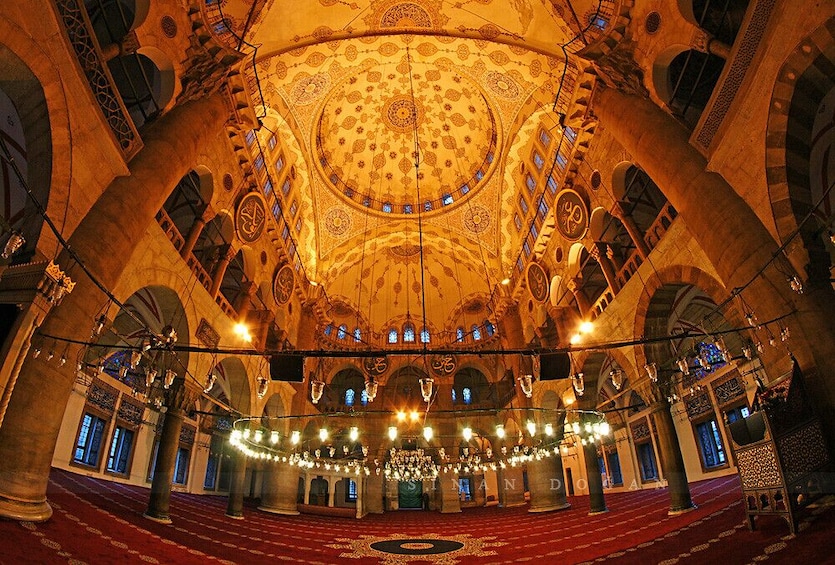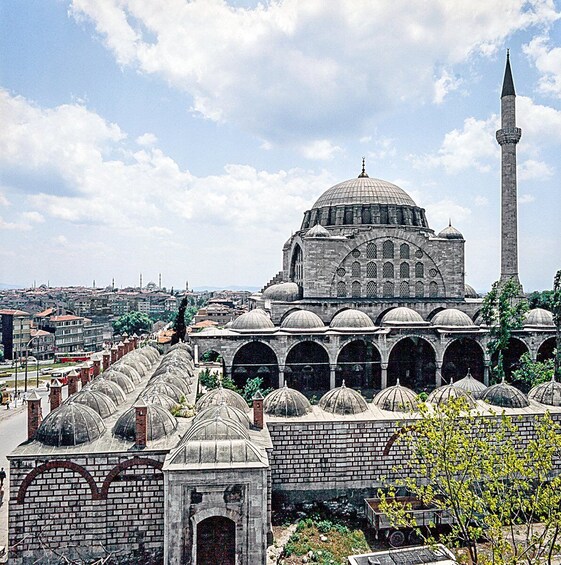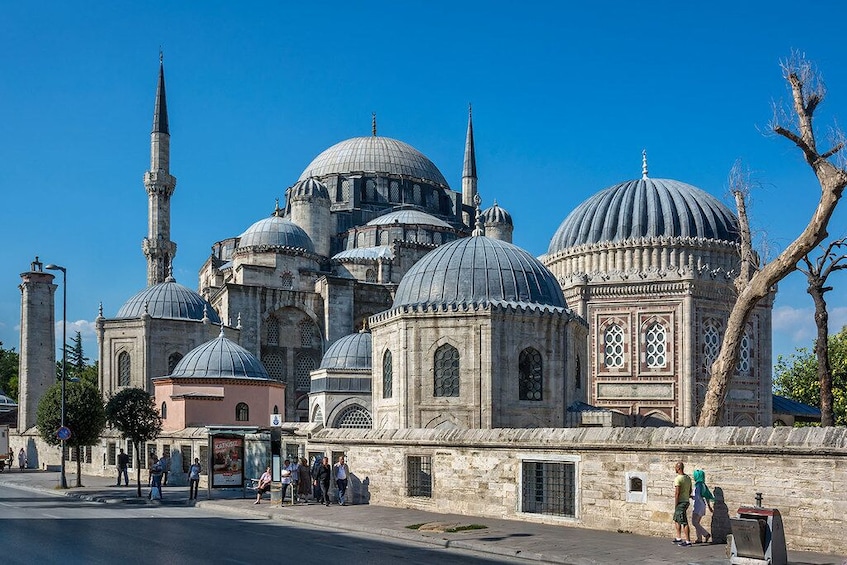Emerged in early capitals, Bursa & Edirne in 14 and 15th centuries, Ottoman Architecture was developed from Seljuk Architecture with an influence of Eastern Roman & Persian Empires.
The Classical Period of Ottoman Architecture is to a large degree a development of the prior approaches as they evolved over the 15th and early 16th centuries and the start of the Classical period is strongly associated with the works of Mimar Sinan.
Became the candle light of the Ottoman Architecture, Sinan served not only for public works, but also he was a mastermind of the military constructions of all kinds. Sinan's vision and foresight led him to become the Imperial Architect and Engineer of his time and ranked him above a minister position.
This specially curated experience will give you a chance to explore those iconic landmarks with their backgrounds:
- Kilic Ali Pasha Mosque: At his 90s, Sinan managed to construct one of the eye-catching structures in Istanbul, with the order of the Grand Admiral's, Kapudan-i Derya Kilic Ali Pasha.
- Mihrimah Sultan Mosque: Commisioned by the daughter of Suleiman the Magnificiant, Mihrimah Sultan and sited on the peak of the Sixth Hill near the highest point of the city, the mosque's itself is also a prominent landmark of Istanbul now.
- Atik Valide Mosque: Built for Nurbanu Sultan, Venetian-born wife of Selim II and mother of Murat III, to pay tribute. She was the first Queen Mother(Valide Sultan), exercised effective rule over the Ottoman Empire from the harem during the period known as the Sultanate of Women.
- Rustem Pasha Mosque: Decorated with very finest examples of Iznik Tiles, the mosque was built after the Grand VizierRustem's death in 1563. Mosque's feelig is quoted from the travellers, “the stunning beauty of the interior is matched by the feeling of finding a little oasis in the midst of a hectic area.”
- Sehzade Mosque: Dedicated to Sehzade (Prince) Mehmed, Suleiman the Magnificent’s young-passed-away son, and ordered to be built to memorise Sehzade Mehmed long after his death. Sinan the Architect’s early work was the first important imperial commission and ultimately one of his most ambitious piece.
- Suleymaniye Mosque: Named after the longest-reigned Sultan, Suleiman theMagnificentand the mosque's design plays on his self-conscious representation of himself as a “second Solomon” since he was at the heights of his power back then.




